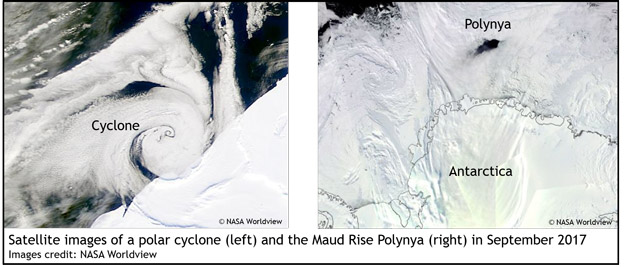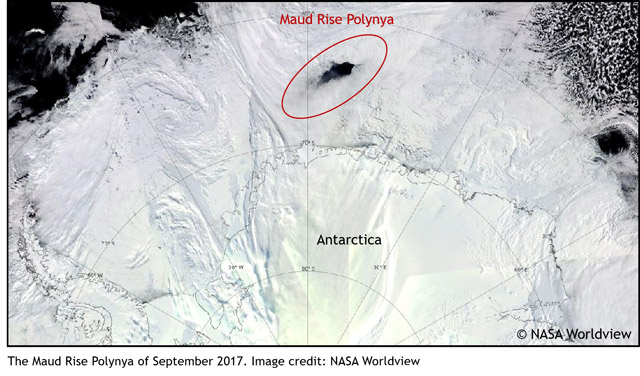- City Fajr Shuruq Duhr Asr Magrib Isha
- Dubai 05:16 06:32 12:06 15:10 17:34 18:51
A study by a research team from the NYU Abu Dhabi Institute, NYUAD, has unravelled a four-decade-long mystery surrounding the occurrence of a mid-sea Polynya – a body of unfrozen ocean that appeared within the sea-ice pack during Antarctica’s winter, almost two years ago.

NYUAD Research Scientist, Diana Francis, and co-authors Clare Eayrs and David Holland, all from the Center for Global Sea Level Change, CSLC, and Juan Cuesta of the University of Paris-East, conducted the study to unravel this phenomenon.
The Maud-Rise Polynya was spotted in mid-September 2017 in the centre of a sea-ice pack in Antarctica's Lazarev Sea, causing researchers to question how this phenomenon occurred during Antarctica’s coldest, winter months when sea ice is at its thickest. Since it was difficult to access the location, NYUAD scientists used a combination of satellite observations and reanalysis data to discover that cyclones - as intense as category 11 in the Beaufort Scale - and the strong winds that they carry over the sea-ice pack cause the ice to shift in opposite directions, which leads to the appearance of the Polynya.

At the time of the discovery, the Maud-Rise Polynya was approximately 9,500 square kilometres, square kilometres, in an area equivalent to three times the landmass of the Emirate of Dubai, and grew by over 700 percent to 800,000 square kilometres within a month. Eventually, the Polynya merged with the open ocean once the sea ice started to retreat at the beginning of the austral summer.
"Because of its large size, a mid-sea Polynya is capable of impacting the climate regionally and globally as it modifies the oceanic circulation. It is important for us to identify the triggers for their occurrence to improve their representation in models and their effects on climate," Francis said.
![]() Follow Emirates 24|7 on Google News.
Follow Emirates 24|7 on Google News.